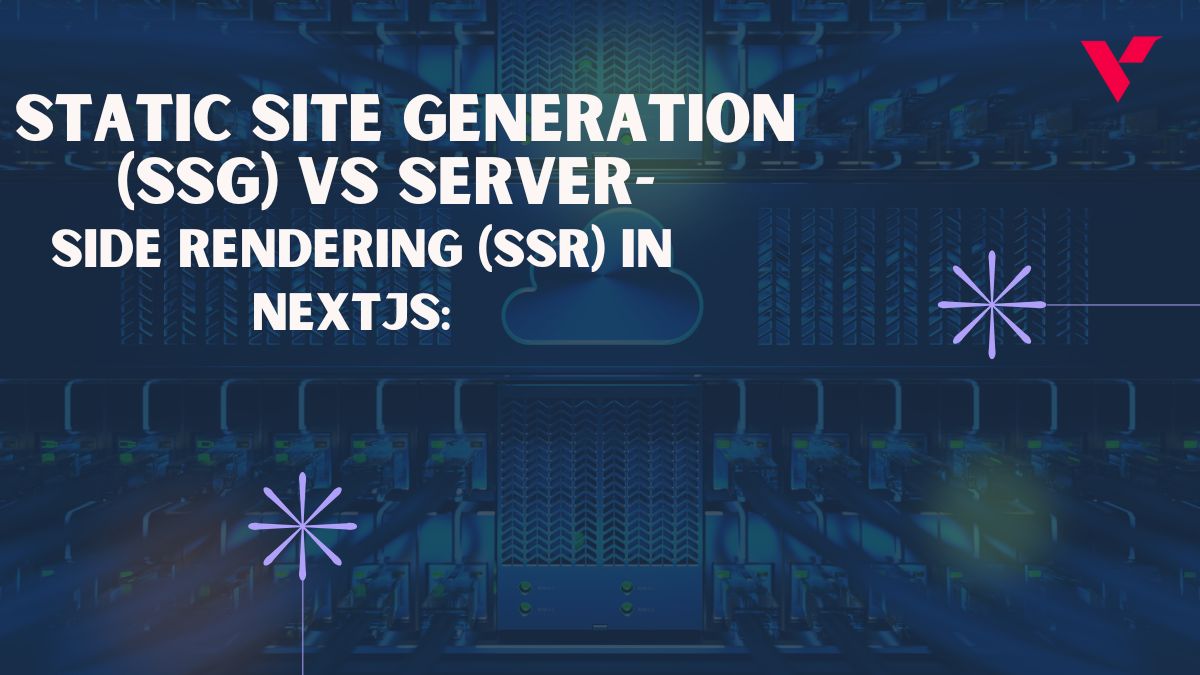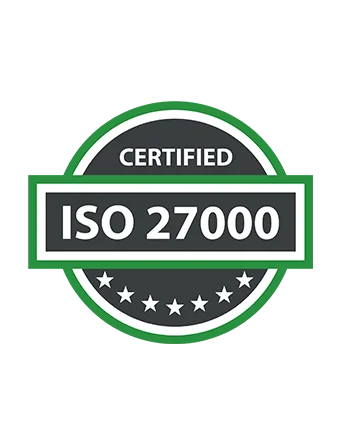NextJS has revolutionized how developers create web applications, providing flexibility and performance with multiple rendering options. When it comes to optimizing for SEO, choosing the right rendering method can significantly impact how search engines perceive and rank your site. Two of the most popular rendering methods in NextJS are Static Site Generation (SSG) and Server-Side Rendering (SSR).
With Google placing a heavy emphasis on user experience and page speed, understanding how SSG and SSR impact SEO is crucial for NextJS developers. Let’s first explore these rendering techniques in detail.
Table of Contents
What is Static Site Generation (SSG) in NextJS?
Static Site Generation (SSG) is a rendering method that generates static HTML files at build time. These files are served directly from a Content Delivery Network (CDN), allowing for ultra-fast page delivery. By using SSG, NextJS developers can optimize sites for speed, performance, and search engine visibility. Here’s a detailed look at how SSG works and its SEO implications.
How SSG Works in NextJS
- Build-Time Rendering: Pages are pre-rendered as static HTML files during the build process.
- CDN Distribution: These static files are distributed across a global CDN for faster delivery.
- Immediate Page Load: When a user requests a page, the nearest CDN edge server serves the static file, eliminating the need for server-side processing.
SEO Benefits of SSG
| Benefit | Description |
| Page Speed and Performance | SSG ensures faster load times, improving Core Web Vitals metrics like Largest Contentful Paint (LCP) and First Input Delay (FID). |
| Crawlability and Indexing | Static HTML files are fully rendered, making it easier for search engines to crawl and index content without JavaScript execution. |
| Scalability | Static files served from a CDN can handle high traffic without performance degradation, ensuring a consistent user experience. |
SEO Challenges of SSG
| Challenge | Description |
| Stale Content | Pages are only updated during a new build, leading to potential issues with outdated content impacting SEO and user experience. |
| Limited Dynamic Content Support | SSG struggles with handling dynamic or user-specific content, which can reduce the visibility of personalized pages for search engines. |
Ideal Use Cases for SSG
Static content-driven websites like blogs, marketing landing pages, and portfolio sites benefit the most from SSG’s speed and SEO advantages.
What is Server-Side Rendering (SSR) in NextJS?
Server-Side Rendering (SSR) is a dynamic rendering approach where pages are generated on the server at the time of each user request. This ensures that users and search engines always receive the latest content, making SSR ideal for websites with frequently changing or personalized content.
How SSR Works in NextJS
- Request Handling: The server intercepts each user request and starts the rendering process.
- Data Fetching: The server fetches the required data from APIs or databases.
- HTML Generation: The HTML is dynamically generated on the server and sent to the browser for immediate display.
SEO Benefits of SSR
| Benefit | Description |
| Fresh Content | Every user request is served the latest version of the page, ideal for real-time content updates. |
| Improved Dynamic Content Visibility | All static and dynamic content is rendered on the server, ensuring better crawlability for search engines. |
| Support for Personalization | Personalized content is fully visible to search engines since it is server-rendered. |
SEO Challenges of SSR
| Challenge | Description |
| Slower Initial Load Times | Server-side processing can increase Time to First Byte (TTFB), negatively affecting Core Web Vitals. |
| Scalability Issues | SSR is resource-intensive, and high traffic can lead to performance bottlenecks or even downtime. |
Ideal Use Cases for SSR
Real-time applications, news portals, and e-commerce sites with dynamic content benefit the most from SSR’s real-time content delivery and personalization capabilities.
Comparing SSG and SSR for SEO
When deciding between Static Site Generation (SSG) and Server-Side Rendering (SSR) for NextJS projects, understanding their SEO implications is critical. Each method has unique strengths and challenges across various performance factors that directly impact search rankings.
Page Speed and Core Web Vitals
Page speed is a crucial SEO factor, and Google uses Core Web Vitals—Largest Contentful Paint (LCP), First Input Delay (FID), and Cumulative Layout Shift (CLS)—to assess page experience.
SSG: Static files are served directly from a CDN, leading to near-instantaneous loading. This reduces LCP and FID, making SSG a preferred option for fast-loading, SEO-friendly sites.
SSR: Since SSR pages are rendered on the server upon each request, there is a delay before the content is delivered to users. High Time to First Byte (TTFB) can negatively impact LCP and, subsequently, rankings.
SEO Takeaway: SSG typically outperforms SSR in terms of speed, providing a consistent boost to Core Web Vitals metrics.
Crawlability and Indexing
Ensuring search engines can easily crawl and index content is essential for SEO success.
SSG: SSG generates fully rendered HTML files at build time, making all content immediately available for search engine crawlers. This eliminates the risk of incomplete or delayed JavaScript rendering.
SSR: SSR also delivers fully rendered HTML, ensuring visibility for all content. However, any delays or server errors during the rendering process can hinder Google’s ability to crawl and index the page effectively.
SEO Takeaway: Both SSG and SSR offer good crawlability, but SSG provides more consistency due to its static nature.
Content Freshness
Keeping content up-to-date is critical, especially for news portals and e-commerce sites.
SSG: Static pages are only updated during site rebuilds, creating a potential risk of outdated content being served. Frequent rebuilds can mitigate this but may increase operational complexity.
SSR: SSR pages are generated dynamically for each request, ensuring the latest content is displayed to both users and search engines.
SEO Takeaway: SSR excels in providing fresh, real-time content, making it ideal for frequently updated websites.
Scalability and Handling Traffic Spikes
Handling high traffic efficiently is essential for maintaining a positive user experience and SEO rankings.
SSG: Static files served from a CDN can handle massive traffic spikes without additional server resources. This makes SSG highly scalable and resilient.
SSR: Each user request requires server-side rendering, which can strain server resources during high-traffic events. Slow server responses or crashes can negatively impact SEO.
SEO Takeaway: SSG is the better choice for websites that expect high traffic or sudden traffic surges.
| SEO Factor | SSG | SSR | SEO Takeaway |
| Page Speed and Core Web Vitals | Static files are served from a CDN, leading to near-instantaneous loading. Improves LCP and FID. | Pages are dynamically rendered on the server, potentially increasing TTFB and affecting LCP. | SSG generally outperforms SSR in speed, providing a consistent boost to Core Web Vitals. |
| Crawlability and Indexing | Fully rendered HTML files at build time ensure immediate visibility for search engines. | Fully rendered HTML is delivered, but delays or server errors may hinder crawlability. | Both are good for crawlability, but SSG is more consistent due to its static nature. |
| Content Freshness | Pages are updated only during rebuilds, potentially leading to stale content. | Pages are generated dynamically, ensuring the latest content for users and search engines. | SSR is ideal for real-time content needs on frequently updated websites. |
| Scalability and Traffic Spikes | Highly scalable due to static files served from a CDN, making it resilient during traffic surges. | Each request requires server-side rendering, which can strain resources and lead to slower responses. | SSG is better suited for websites that expect high traffic or sudden traffic spikes. |
Best Practices for SEO-Optimized SSG and SSR
To maximize SEO performance for both SSG and SSR, follow these best practices:
- Monitor Core Web Vitals: Use Google Lighthouse and PageSpeed Insights to regularly measure and improve your Core Web Vitals scores.
- Optimize Data Fetching: Reduce the number of API calls to minimize rendering time, especially for SSR pages.
- Leverage Caching: Implement server-side caching or CDN caching to improve SSR page speed.
- Preload Critical Assets: Preload essential resources such as CSS and JavaScript to improve initial load times.
How Google Handles SSG and SSR Content for SEO
Google’s search engine algorithms and crawling mechanisms are designed to handle various content types. Understanding how Google processes SSG and SSR content is essential for optimizing your site for better rankings.
Crawlability and Rendering Behavior
Google’s ability to crawl and render content accurately is key to ensuring full indexation and visibility in search results.
SSG: SSG pages are fully rendered at build time, meaning Google receives static HTML files when it crawls the page. This ensures that all content is visible immediately without requiring additional JavaScript execution.
SSR: With SSR, fully-rendered HTML is dynamically generated on the server for each user request. Google also receives fully rendered pages, but slow server responses or errors can hinder effective crawling and indexing.
Google’s Approach: Both SSG and SSR are equally favorable for crawlability as long as there are no rendering delays or errors.
Core Web Vitals and Page Speed
Google’s page experience ranking factors, particularly Core Web Vitals, play a significant role in determining a page’s SEO performance.
SSG: Pages served from a CDN load faster, resulting in better Core Web Vitals scores, especially for LCP and FID. This enhances Google’s perception of the site’s user experience.
SSR: SSR pages often experience slower initial load times due to server-side processing. High TTFB can negatively impact Google’s Core Web Vitals scores.
Google’s Approach: Google favors faster pages, giving SSG an edge due to its faster page speed.
Handling Content Freshness
Serving up-to-date content is vital for SEO, especially for sites with dynamic information.
SSG: Static pages may serve outdated content unless the site is frequently rebuilt. Google may penalize stale content in search rankings.
SSR: Since pages are generated dynamically for each request, SSR ensures Google always receives the latest content, enhancing SEO for time-sensitive websites.
Google’s Approach: Google values fresh, relevant content, making SSR more suitable for dynamic, real-time updates.
Dynamic and Personalized Content
Personalized or user-specific content is a challenge for search engine indexation.
SSG: Dynamic content is often added through client-side JavaScript, which Google may struggle to fully render and index.
SSR: Since all content is rendered on the server, Google receives the complete page, including personalized or dynamic data.
Google’s Approach: SSR is better at handling dynamic content, ensuring full indexation of all page elements.
| Factor | SSG | SSR | Google’s Approach |
| Crawlability and Rendering | Fully rendered at build time, providing static HTML immediately for Google’s crawlers. | Fully rendered HTML is generated dynamically for each request, but slow servers may cause delays. | Both are favorable as long as there are no rendering delays or server errors. |
| Core Web Vitals and Page Speed | Pages load quickly from a CDN, improving LCP and FID scores and enhancing Google’s page experience. | Slower load times due to server-side rendering may negatively impact Core Web Vitals and rankings. | Google favors faster-loading pages, giving SSG an edge in terms of speed and user experience. |
| Content Freshness | Static pages may serve outdated content unless rebuilt frequently, risking SEO penalties for staleness. | Dynamically generated pages ensure Google always receives the latest content. | Google prefers fresh, relevant content, making SSR more suitable for real-time updates. |
| Dynamic and Personalized Content | Dynamic content added via JavaScript may not be fully rendered or indexed by Google. | Server-rendered pages include all dynamic content, ensuring complete visibility for search engines. | SSR is better at handling and indexing dynamic content, ensuring full page indexation. |
Choosing the right rendering as per Website and SEO Goals
When building an SEO-optimized site with NextJS, selecting between Static Site Generation (SSG) and Server-Side Rendering (SSR) should be tailored to your specific website type and business goals. Let’s break down common website types and the recommended rendering method for each scenario.
Blogs and Content-Driven Websites
SEO Goal: Fast page loads, better crawlability, and easy indexation.
Recommended Method: SSG
- Static blogs and content-driven websites typically have infrequent updates, making SSG the perfect choice.
- Google can easily index fully rendered pages, improving visibility in search results.
- Static pages ensure fast loading times, positively impacting Core Web Vitals and SEO.
Example Use Case: Personal blogs, informational content hubs, and marketing landing pages.
E-Commerce Sites
SEO Goal: Balance between speed, dynamic content, and up-to-date inventory information.
Recommended Method: SSR
- E-commerce websites often display dynamic content such as product availability, pricing, and personalized recommendations.
- SSR ensures fresh content for every page request, helping users and search engines access the latest information.
- While slower than SSG, caching strategies and CDN distribution can mitigate SSR’s performance drawbacks.
Example Use Case: Online stores, product catalog pages, and user dashboards with personalized recommendations.
News and Media Portals
SEO Goal: Serve up-to-the-minute content while maintaining crawlability and fast load times.
Recommended Method: SSR
- News portals must serve the latest headlines, articles, and updates as they happen. SSR ensures that each page displays real-time content.
- For archived or evergreen articles, combining SSR with static caching can improve page speed while maintaining content freshness.
Example Use Case: News websites, breaking news sections, and media publishers.
Portfolio and Showcase Websites
SEO Goal: Showcase visual content with fast load times to improve user engagement and search rankings.
Recommended Method: SSG
- Portfolio websites typically contain static content like images, project descriptions, and testimonials.
- SSG provides fast, smooth page loads, enhancing the user experience and improving SEO.
Example Use Case: Personal portfolios, design agencies, and creative professionals.
User Dashboards and SaaS Platforms
SEO Goal: Personalize user experiences while maintaining high performance for SEO-critical pages.
Recommended Method: SSR
- User dashboards and SaaS platforms often display personalized data that changes frequently. SSR ensures users see the latest information in real-time.
- If SEO visibility is needed for static sections (e.g., marketing pages), consider using a hybrid approach—SSG for static pages and SSR for dynamic sections.
Example Use Case: SaaS applications, customer portals, and analytics dashboards.
Conclusion
Static Site Generation (SSG) excels in speed, scalability, and consistent SEO performance, making it ideal for content-heavy and traffic-intensive websites. On the other hand, Server-Side Rendering (SSR) shines for dynamic, real-time content that needs frequent updates.
Selecting the right rendering method and applying advanced SEO techniques can significantly improve your NextJS website’s search engine visibility. Whether you choose SSG, SSR, or a hybrid approach, the key is to balance speed, content freshness, and crawlability for optimal SEO performance. Ultimately, the right choice depends on your website’s content type, SEO goals, and user experience priorities.




















